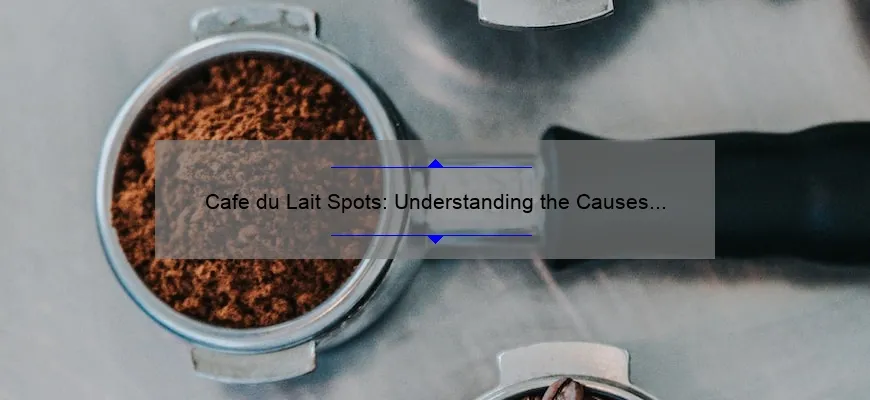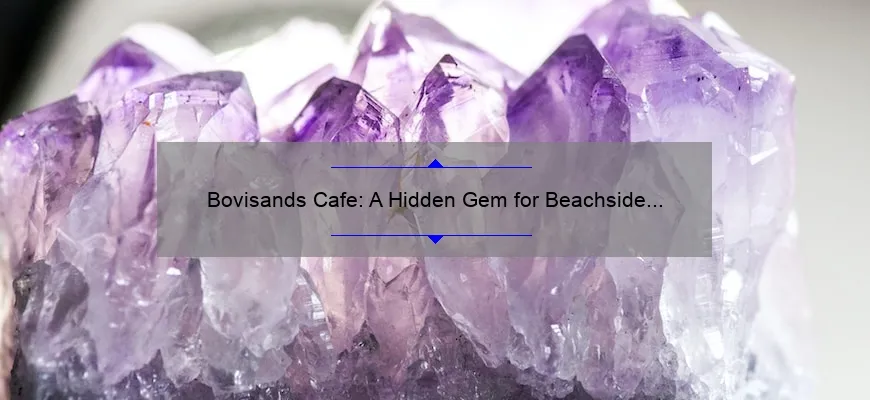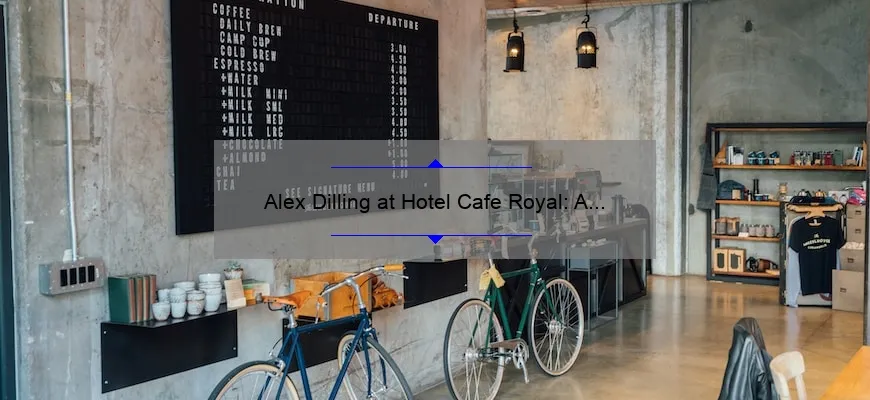Short answer: Café au lait spots
Café au lait spots are flat, pigmented birthmarks that often appear in childhood. They vary in size and color but typically have a light brown or beige hue similar to café au lait (coffee with milk). The presence of multiple café au lait spots can be indicative of certain genetic conditions such as neurofibromatosis type 1 (NF1), while single spots may not be concerning on their own.
Step-by-Step Guide to Creating Your Own Cafe du Lait Spots at Home
Are you someone who loves to indulge in a warm, creamy cup of café au lait at your favorite coffee shop but always wondered about creating those delightful spots right at home? Well, fear not! We’ve got you covered with our step-by-step guide to recreating that ultimate cafe du lait experience in the comfort of your own kitchen. So, put on your barista hat and let’s get started!
Ingredients:
– Strong brewed coffee or espresso
– Whole milk (we recommend sticking to full-fat milk for more creamy texture)
– Sugar or sweetener (depending on your preference)
Equipment:
– French press or drip coffee maker
– Milk frother
Step 1: Brew The Coffee
First things first, we need some strong brews of hot coffee. You can either use an automatic drip machine or a French press depending on what method suits you best. If using a French Press then just add coarse ground coffee beans – roughly 20g+ per cup – and pour boiling water into the chamber/mug. Don’t forget steeping time – around three to four minutes is perfect.
Once done brewing, set aside the required amount.
Step 2: Froth Your Dairy
Now comes one of the crucial parts – frothing up the whole milk till it becomes nice and fluffy without any bubbles left behind. Use a good quality handheld electric frother if available otherwise try tilting whichever vessel works best but keep stiring inside until everything appears dissolved instead of seeing any lumps clinging together.
Pro Tip: For small homespun servings we would recommend using measurements like half cups so it’s easier by processing each one individually before adding them all together.After this process is completed,you should have made very thick foam almost clogging entire upper part surface however after treating further such as straining off excess liquid ,this will leave room near bottom containing denser concentrate used later rather than pouring simultaneously taking away flavorful traces.
Step 3: Combine The Two
Once you have your coffee and frothy milk, it’s time to bring them together. In a large mug or glass, pour in the desired amount of hot brew – usually about three-quarters full should work just fine. Next, add enough frothed-up dairy on top until there’s very little room left in the container; this will allow for that delightful creamy texture we all crave at our favorite spot.
Step 4: Sweeten To Taste
If you like your café du lait with a touch of sweetness then now is the time to stir in some sugar or other sweetener. Go easy though as over-sweetening can ruin even gourmet quality ingredients! depending on its strength we have found two teaspoonfuls give great flavor enhancement without making everything cloying/kitschy thus encouraging balance where one could enhance prominence of either taste by adding few more teaspoons.
Pro Tip: Try using different types of alternative sweeteners such as honey or maple syrup instead for a nuanced twist
And voila! You’ve made yourself
Cafe du Lait Spots FAQ: Everything You Need to Know
Café du Lait spots, also known as Mongolian spots or congenital dermal melanocytosis, are pigmented birthmarks that can be found on the skin of babies and young children. These marks often appear bluish-gray or black in color and can resemble bruises, causing concern for parents who may mistake them for injuries.
Here’s everything you need to know about Café du Lait spots:
What causes Café du Lait spots?
Café du Lait (CDL) spots are caused by an excess production of pigment cells called melanocytes. The reason why some babies have more pigment cells than others is not fully understood but it may be due to genetic factors.
Are CDL Spots harmful?
In most cases, CBD spots are completely harmless and do not pose any health risks to a baby’s development or well-being.
How common are Cafe Du Lait Spots?
They’re actually quite common: they’re present in approximately 1 in every 4 newborn infants with darker skin tones; Caucasian children tend only to develop these marks if one of their parents has them too.
Can I prevent my child from getting Café du Lait spots?
As these ain’t related to trauma perceiving creams won’t hear nor there effects on such conditions.
Can I remove Café du Lait Spots once they appear?
There is no medical treatment necessary for Café au lait mole removal since it doesn’t cause any symptoms such as itching unprompted growth etc.
When should I see a doctor about my child’s CDL spot?
If your café au lait mark appears irregularly or suddenly changes its size shape texture color etc., this might indicate something more serious is going on underneath, we suggest visiting pediatrician immediately.
In conclusion,
Though spotting café au laits deriving altogether various colors could signify underlying circumstances behind sudden fluctuations with grown ups yet when talking about kids, they’re completely normal and innocuous. No need to fret so much about them and enjoy the fascinating little marks on your child’s body as their own unique stamp in this world!
How Cafe Du Lait Spots Became a Trend in the Coffee World
In recent years, the coffee industry has seen a rise in popularity of Cafe Du Lait spots. This trend is not just limited to cafes or restaurants but can be found in social media and even home brewing machines.
Cafe du Lait translates to “coffee with milk” in French, which might lead some to believe that it is similar to regular cafe latte found at any coffee shop. However, Cafe Du Lait spots are different as they are characterized by their distinct two-tone appearance where the coffee and milk portions clearly stand out from each other.
The origins of this type of beverage date back to France during the 19th century when dairy farming was widespread in Brittany. The farmers there would enjoy adding cream to their morning cup of coffee as an indulgent treat – leading to the birth of what we now know as Cafe Du Lait Spots.
Despite its classic roots, this drink’s current popularity can be attributed partly due to the growing consumer interest in Instagram-worthy food and drinks. The distinctive appearance makes it visually pleasing while providing an excellent opportunity for photography enthusiasts who want something more interesting than a plain old cappuccino or latte on their feed.
Another reason why Cafe Du Lait spots have become trendy is because of their unique taste profile. Unlike traditional lattes where espresso shots overpower milk flavor, these beverages allow you to appreciate both notes simultaneously without either one being too dominant- creating perfect balance between bitterness and sweetness.
Moreover, it seems that people have developed curiosity regarding Cade du Lait Spot’s composition since they contain less foam; therefore making them ideal for those interested in trying something new apart from usual foamy café favorites like cappuccinos or macchiatos.
Lastly, with numerous alternatives available globally including soy-based ones and vegan versions using plant-based milks- Café du lait spot provides replacements centered around good health practices: eliminating animal-sourced products also offers consumers eco-friendliness since animal agriculture has been responsible for one-sixth of worldwide greenhouse gas emissions.
In conclusion, Cafe Du Lait spots’ popularity comes from their unique taste, vibrant appearance and photographic value which is perfect for those seeking unconventional coffee experiences. They are easily accessible globally while offering numerous alternatives that cater to health needs as well as environmental sustainability concerns- making them a trend in the coffee world not worth missing!








